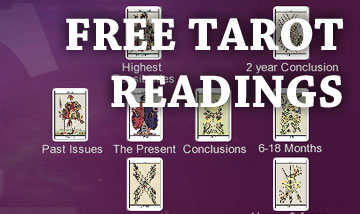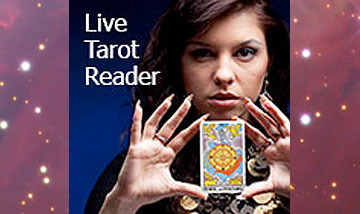Yoga (article courtesy of my friend and yoga teacher Amanda Brown)
Yoga : or union with the soul is popularly thought of as
either a series of deep breathing exercises or, perhaps a rather strange
set of holding postures. However, there is a lot more to it than
that. Although Yoga is not a religion itself it is sometimes
referred to as the art of living based on the science of living, and can
enhance sincerely held religious beliefs. There is certainly no
incompatibility between the basic principles of yoga and those of the main
religious doctrines.
In the textbooks it is variously described as a philosophy, an
art, a healing therapy or an ancient classical science dealing with the
search for and union with the soul. It is all of these. About
2000 years ago an Indian sage named Patanjali, wrote a treatise on yoga
which had been practiced for many hundreds of years with no formal written
texts. In this treatise Patanjali defined yoga practice as stilling
the fluctuations of consciousness, sometimes more simply interpreted as
thought control, and set out the foundation and philosophy of Astanga
yoga, the eight limbs of yoga, to achieve this aim.
These eight limbs of yoga comprise the following:
| First Limb containing the 5 Yamas (Universal Ethical Principals) | |
| Ahimsa (Non harm) | Harmlessness towards oneself and others:
"careless speech, gossip and unkind thought are among the
commonest ways in which we harm each other" (1). But more
than this ahimsa requires the conscious cultivation of positive
qualities such as: patience, calmness, compassion, reasonability and
respect for self, others and the environment. |
| Satya (Truth) | Truthfulness: "develop an attitude of
truthfulness by recognising and accepting the state of things and
circumstances as they are and work with what is" (2). Beware
of exaggeration, heresay or "holding and opinion without
studying the facts" (3). |
| Asteya (Non stealing) | From the obvious stealing of money or possessions, to
the subtle, i.e. "stealing another's time, emotions, attention
or ideas. The main reasons for people stealing is insecurity,
selfishness, greed, poverty consciousness and
desperation" (4). |
| Brahma charya | Restraining the senses: "Remember happiness or
pleasure is not in the objects you desire but within your own Self
(soul nature)" (5). A new pair of Gucci shoes probably won't
make you happy for any length of time, but peace, a clear conscience
and deeper sense of purpose in life probably will.
"Artificial values stemming from acquisitiveness and self
interest lead to an alienation from the spiritual purpose" (6). |
| Apari graha | Non-covetousness: "If people took only what they
needed instead of what they greeded there would be enough for
everyone" (7). Something to ponder in while shopping. |
| Second Limb containing the 5 Niyamas (Principals of individual behaviour) | |
| Saucha | Cleanliness: The practice of asanas helps to tone the
body and remove the impurities and toxins that are built up.
"But more important than the cleansing of the body is the
cleansing of the mind of disturbing emotions, such as: passion,
anger, lust, greed, delusion and pride" (8). |
| Santosha | Contentment: "There is contentment and
tranquility when the flame of the spirit does not waver in the wind
of desire" (9). Learn to be still within, the mind's natural
state is to be calm and crystal clear; uncluttered with desire and
attachment. Many of the yoga techniques will bring about a
state of calm and objectivity, which help create inner harmony and
content. |
| Tapas | Austerity or self discipline. Regular, precise
asana practice, steady diaphragmatic breathing and calmness are all
aspects of tapas. |
| Svadhaya | Self study: "Self awareness begins with you here
and now, in this moment, in every moment of life" (10).
Svadhaya is also a reference to studying one's thoughts, actions,
feelings and motives to remove the obstacles to self realisation. |
| Isvara prani dhana | Literally means: "Surrender to the Lord: One way
of looking at this is to think in terms of surrender to the higher
being within the soul or spirit. In Yogi philosophy the inner
being is called Atman and is seen as a spark of the greater divine
being called Brahman. |
|
|
|
| Third Limb | |
| Asanas (Yoga postures) | "Asanas are an integral part of yoga. They
are not mere physical exercises as they involve both psychological
as well as physiological processes. They are linked to all the
other aspects of yoga, rooted in ethics and ending in
spirituality" (11). There are said to be some 840,000
positions and variations corresponding to the full potential of
human movement. |
|
|
|
| Fourth Limb | |
| Prana yama | Pranayama is the practice of yoga breathing techniques
that deal with the flow of prana. |
| Fifth Limb | |
| Pratya hara | Control of the senses and withdrawal into the inner
world. |
| Sixth Limb | |
| Dharana | concentration of the mind. |
| Seventh Limb | |
| Dhyana | Meditation. |
| Eighth Limb | |
| Samadhi | Absorption in the infinite. Samadhi can be
defined as the culmination of yoga practice. According to
Iyengar and Sturgess, it is a state of truth and bliss, rarely
attained, which is divided into a number of levels of spiritual
evolution. |
| NB: There are literally hundreds of yoga philosophy books and the above notes are simple extracts to give a flavor of the subject. |
Practical Tips for those practicing yoga (12)
* There is no need to push beyond what one is happy to do,
there are no prizes to be won and no points to be scored for
performance. Yoga is more of a healing tool than a sport.
* Loose clothing should be worn and at least two hours allowed
to elapse after eating a meal.
* During menstruation it is advisable to practice only cooling
postures, no inverted nor overly strenuous postures should be performed.
* As a general rule do not hold breath during postures, deepen
and lengthen the breath.
* Remember: rhythm and release whilst working in the
postures. Use the out breath to extend the posture not exaggerated
force of muscle.
* To get real and constant benefits half and hour's daily
practice is highly recommended followed by a period of relaxation.
Sources:
1). The Application of Yoga in Daily Life - Ianthe H
Hoskins
2). The Yoga Book - Stephen Sturgess
3). The Application of Yoga to Daily Life - Ianthe H Hoskins
4). The Yoga Book - Stephen Sturgess
5). ditto
6). Yoga the Iyengar Way - Silva Mira & Shyam Mehta
7). Mahatma Ghandhi
8). The illustrated Light on Yoga - BKS Iyengar
9). ditto
10). The Yoga Book - Stephen Sturgess
11). Yoga the Iyengar Way - Mehta
12). Acu Yoga - MR Gach and the Yoga Book - Stephen Sturgess
 DISCOVER TAROT ON iPHONE, iPAD AND ANDROID.
DISCOVER TAROT ON iPHONE, iPAD AND ANDROID.
Learn Tarot Card Meanings, what they mean when combined in a reading, test your knowledge in the Tarot Quiz and reveal what the future may hold with the Tarot Reading App.





